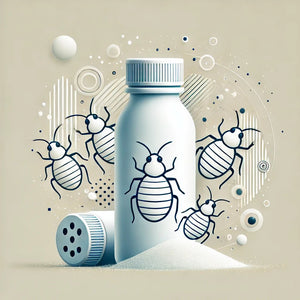5 Myths About Using Diatomaceous Earth for Bed Bugs – Debunked!
Diatomaceous Earth for Bed Bugs
Diatomaceous earth (DE) is a popular, natural solution for dealing with bed bugs, but many people have misconceptions about its use and effectiveness. Let's debunk some of the most common myths to ensure you’re using DE properly for the best results.
1. Myth: “Diatomaceous Earth Kills Bed Bugs Instantly”
Truth: Unlike chemical insecticides, DE does not kill bed bugs instantly. DE is made from fossilized algae, and its sharp, microscopic particles damage the exoskeleton of bed bugs, causing them to dehydrate and die. However, this process takes time, often several days to weeks, depending on the extent of the infestation and environmental conditions.
Tip: Be patient and monitor the treated areas. Reapply DE as needed and combine it with other bed bug control methods for faster results.
2. Myth: “You Only Need a Little Bit”
Truth: While it’s true that you don't need a heavy layer, the effectiveness of DE depends on applying a light, even coating to areas where bed bugs travel. Too much DE can actually create barriers that bed bugs may avoid, while too little won’t be effective in reaching all bugs.
Tip: Focus on applying DE to cracks, crevices, along baseboards, and other common hiding spots. An even spread will maximize exposure and increase its effectiveness.
3. Myth: “It's Only for Outdoor Use”
Truth: Diatomaceous earth is perfectly safe for indoor use as long as you use food-grade DE, which is non-toxic to humans and pets. It’s an effective addition to your indoor pest control strategy, particularly in bedrooms, living areas, and storage spaces where bed bugs are likely to hide.
Tip: Wear a mask during application to prevent inhaling fine particles, and avoid applying DE in large quantities that could be easily disturbed, creating dust in the air.
4. Myth: “It’s Safe in Any Quantity”
Truth: While DE is safer than chemical pesticides, it can still pose respiratory risks if inhaled in large amounts. Use caution when applying DE, especially around pets and children, and always opt for food-grade DE.
Tip: Apply DE in areas where it will remain undisturbed, such as under furniture or along baseboards, to reduce the chance of it becoming airborne. Always wear protective gear like masks and gloves during application.
5. Myth: “It’s a Standalone Solution”
Truth: Diatomaceous earth is a great tool in the fight against bed bugs, but it’s most effective when used as part of a comprehensive pest control strategy. Bed bugs are notoriously resilient, and relying solely on DE may not achieve complete eradication.
Tip: Combine DE with other methods such as heat treatments, mattress encasements, and professional pest control services. This integrated approach increases the likelihood of eliminating all bed bugs from your home.
Final Thoughts
While diatomaceous earth can be a valuable part of your bed bug control plan, understanding these myths will help you use it more effectively. Remember, the key to success is patience, proper application, and combining methods for the best results.
For more information on how to use diatomaceous earth for bed bugs, visit our How to Use Diatomaceous Earth page.


